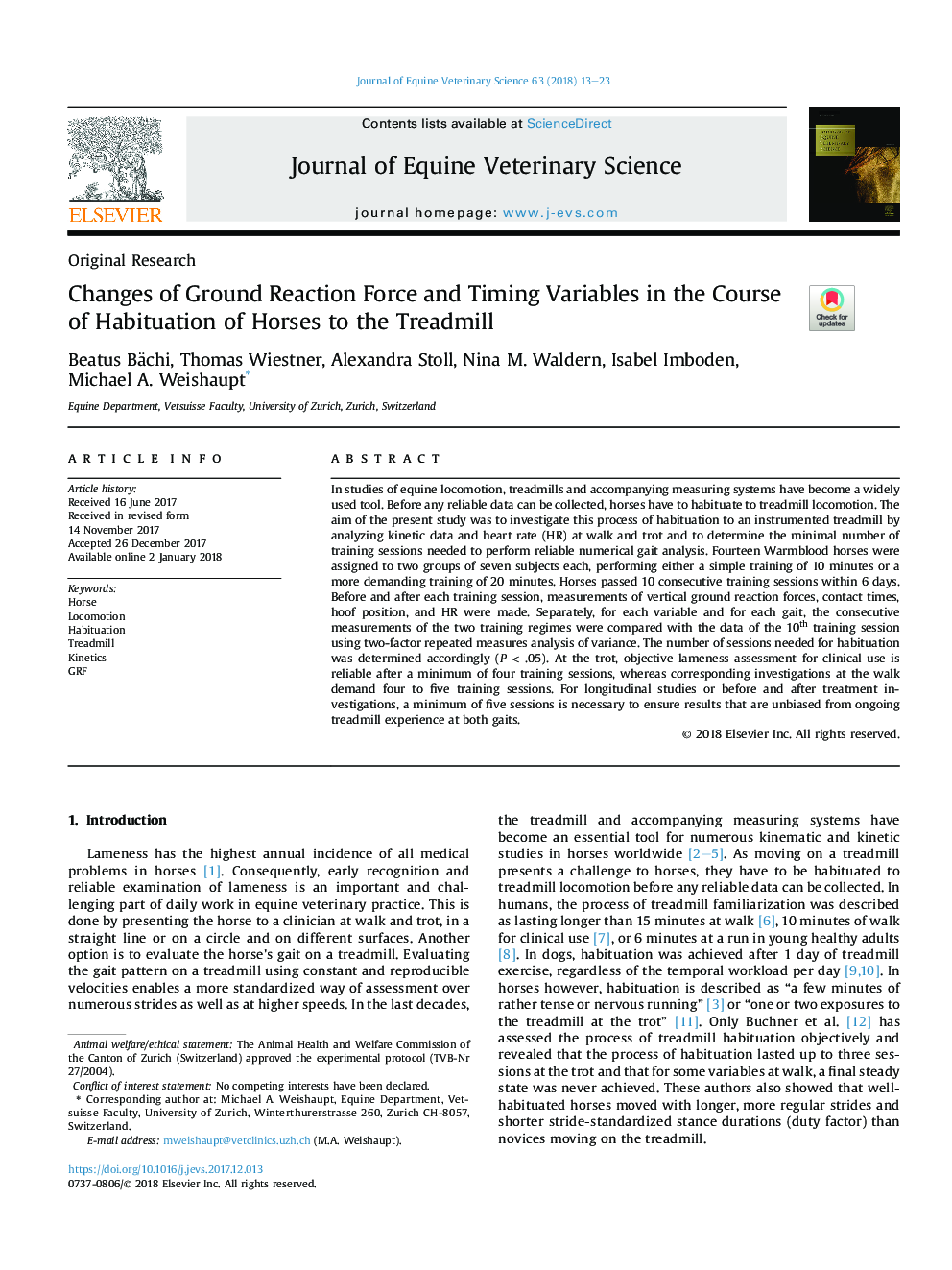| Article ID | Journal | Published Year | Pages | File Type |
|---|---|---|---|---|
| 8483163 | Journal of Equine Veterinary Science | 2018 | 11 Pages |
Abstract
In studies of equine locomotion, treadmills and accompanying measuring systems have become a widely used tool. Before any reliable data can be collected, horses have to habituate to treadmill locomotion. The aim of the present study was to investigate this process of habituation to an instrumented treadmill by analyzing kinetic data and heart rate (HR) at walk and trot and to determine the minimal number of training sessions needed to perform reliable numerical gait analysis. Fourteen Warmblood horses were assigned to two groups of seven subjects each, performing either a simple training of 10Â minutes or a more demanding training of 20Â minutes. Horses passed 10 consecutive training sessions within 6Â days. Before and after each training session, measurements of vertical ground reaction forces, contact times, hoof position, and HR were made. Separately, for each variable and for each gait, the consecutive measurements of the two training regimes were compared with the data of the 10th training session using two-factor repeated measures analysis of variance. The number of sessions needed for habituation was determined accordingly (P < .05). At the trot, objective lameness assessment for clinical use is reliable after a minimum of four training sessions, whereas corresponding investigations at the walk demand four to five training sessions. For longitudinal studies or before and after treatment investigations, a minimum of five sessions is necessary to ensure results that are unbiased from ongoing treadmill experience at both gaits.
Related Topics
Life Sciences
Agricultural and Biological Sciences
Animal Science and Zoology
Authors
Beatus Bächi, Thomas Wiestner, Alexandra Stoll, Nina M. Waldern, Isabel Imboden, Michael A. Weishaupt,
